Table of Contents
Introduction
The traditional office setting has transformed significantly, leading to the creation of new work patterns.
As a result, there is a shift toward a hybrid office culture in response to the new labor force requirements and the possibilities remote work offers. A hybrid job allows employees to work online and on the business premises, making the firm and employees more flexible.
Did You Know?
Research shows that 58% of employees worldwide can work remotely at least once a week.
Hybrid work arrangements are meant for employees and employers who seek to adopt the flexible working model, so understanding its benefits is crucial. Most importantly, a flexible work schedule can enhance life satisfaction, productivity, and organizational objectives and targets.
The blog aims to explore what is a hybrid work schedule, various hybrid work schedule arrangements, assess their advantages and disadvantages, and develop strategies to minimize the latter.
Let’s get into it!
What Is A Hybrid Work Schedule?
A hybrid work schedule is a flexible schedule that allows employees to work part-time from home and part-time in the office. This approach, often referred to as hybrid mode, enables employees shift between working in person in the office or workplace and working remotely from home or other locations.
A hybrid schedule makes it possible to work online and occasionally in person so that both working styles are included in the organizational structure. Flexible work schedules are implemented in various ways; some employees work from home, while others must report to work on specific days. Nonetheless, some individuals can work remotely for one week and on-site the following.
How Have Traditional And Hybrid Work Schedules Evolved?
Traditional and hybrid work schedules have changed because of technology, the workforce, and the growing need for workplace flexibility. Here’s how they have evolved:
Traditional Work Schedules
This schedule was created during the industrial era to ensure factory workers were physically present to perform their labor tasks. Traditional work schedules were usually rather rigid and did not allow much flexibility. Attendance was mandatory during typical working hours, usually weekdays from 9 a.m. to 5 p.m.
Hybrid Work Schedules
Modern technical innovations, like the internet, cloud computing, and mobile technologies, have made hybrid work arrangements possible. Employers started allowing employees to work from home on occasion, marking the start of this shift, and today, the process is much more streamlined.
As a result, as more businesses understood the rewards of flexible work arrangements—such as increased output, reduced costs, and improved work-life balance—they sought to maintain these benefits while improving physical interactions for coaching, business, and training.
Today’s workplace offers various options for hybrid set up, including project-based, weekday, and weekly flexibility. This implies that employees can easily juggle their professional and personal responsibilities while accommodating their preferences and individual working styles.
Moreover, new technology and the increasing popularity of remote work will likely lead to more hybrid scheduling patterns, further changing the traditional office environment and customs.
Types Of Hybrid Work Schedules
Here are some common types of Hybrid Work Schedules:
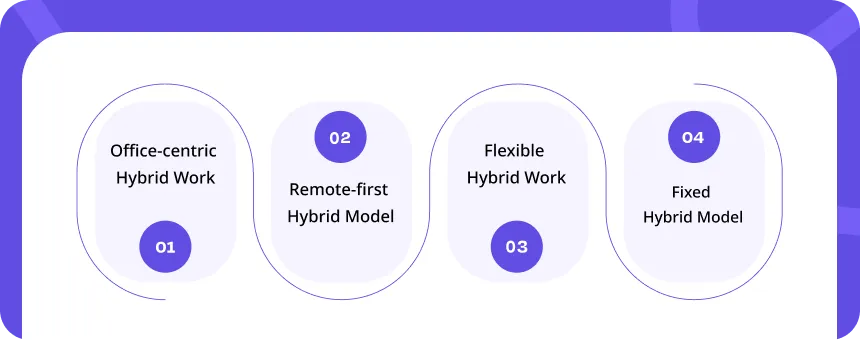
Office-centric Hybrid Work
In this model, employees are expected to spend most of their time at the office, with some work done remotely. There are restrictions on how much time can be spent working remotely, such as working from home one or two days a week. This method works best in companies where employees engage directly with clients, rely heavily on in-person training, or both.
Remote-first Hybrid Model
Based on this model, employees are expected to work remotely from home or other off-site locations as the new normal. Occasional office work, in-person meetings, and teamwork are all acceptable. This approach suits companies with dispersed staff or those aiming to minimize office space usage.
Flexible Hybrid Work
In a flexible hybrid work model, employees can work primarily on-site, remotely, or both. This method is effective because it is flexible and can accommodate individual differences and work speeds. It also requires significant trust between employers and employees, in addition to communication and performance monitoring standards.
Fixed Hybrid Model
A fixed hybrid work schedule may be preferred for companies that prioritize in-person interaction but require remote work flexibility. A set hybrid work structure rather than a flexible hybrid work arrangement defines the traits of working from home. An organization can require employees to work in the office at least three days a week and from home for the rest.
Benefits Of Hybrid Work Schedules
Here are the prominent benefits of hybrid work schedules:
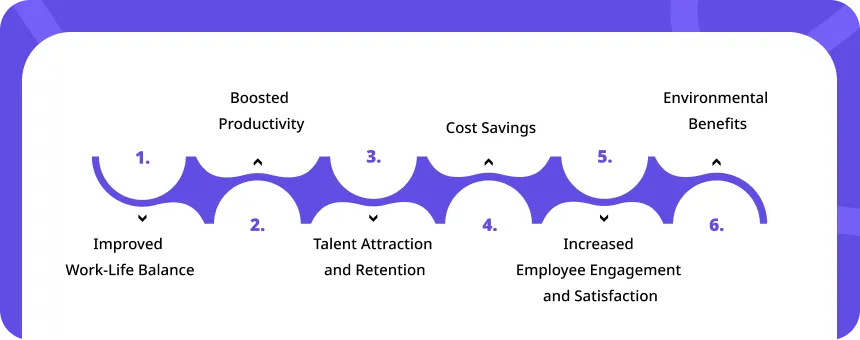
1. Improved Work-Life Balance: Hybrid schedules combine on-site and remote employment advantages to maintain a healthy balance between work and life. This flexibility allows workers to avoid long commutes, manage personal affairs, and achieve a healthy work-life balance.
2. Boosted Productivity: Research suggests that working remotely increases productivity since employees are more comfortable during working hours, experience fewer interruptions during the workday, and save time on commuting. However, maintaining separate work sessions and having on-site workdays can improve prompt collaboration and direct team contact.
3. Talent Attraction and Retention: Encouraging remote work through flexible arrangements makes an organization more appealing to potential employees seeking a flexible schedule. It also helps retain top performers who might otherwise seek positions with flexible schedules elsewhere.
4. Cost Savings: Companies will likely save money on rent and other expenses including utilities, since fewer employees will be physically present on the property. This will also allow employees to save on their commute to work.
5. Increased Employee Engagement and Satisfaction: Hybrid schedules offer increased work flexibility and independence, positively impacting employee motivation and productivity and reducing turnover.
6. Environmental Benefits: With fewer employees commuting daily, hybrid work schedules reduce an organization’s overall environmental impact and carbon emissions.
Hybrid Work Schedules Challenges & Solutions
Challenge #1
Communication and Collaboration Barriers
Keeping communication clear between remote and in-office employees can be tough, leading to gaps in communication.
Solution
Invest in Collaboration Tools: Ensure all employees, whether in the office or working remotely, appropriately use task management software, video calls, and instant messaging to collaborate and communicate effectively.
Challenge #2
Technology Infrastructure
Technology must be dependable and secure at the core of hybrid working, encompassing cloud applications, video conferencing, and high-speed internet access.
Solution
Provide Training: To support hybrid work, organize sessions for employees to learn time management, communication skills, and remote work tools.
Challenge #3
Workplace Culture and Cohesion
When working remotely, creating and upholding a positive workplace culture with colleagues is tough because there’s less in-person interaction.
Solution
Promote Inclusive Culture: Arrange events to improve cultural understanding, like brainstorming, face-to-face meetings, regular check-ins, and virtual get-togethers.
Challenge #4
Inequity and Bias
It is a possibility for onsite and remote workers to feel they are being treated unfairly, which could lead to bias in the opportunities, incentives, or promotions they receive.
Solution
Prioritize Equity and Fairness: Implementing the necessary policies and procedures is imperative to guarantee equal rights and advancements for on-site and remote workers.
Challenge #5
No Work-Life Balance
Employees might face burnout or reduced productivity without a clear separation between work and personal life.
Solution
Encourage Work-Life Boundaries: Motivate employees to use time-tracking software and home-based workstations, set achievable expectations, and ensure that remote workers take regular breaks.
Manage Hybrid Work Schedules And Employees With Workstatus
Here is how Workstatus helps in managing Hybrid Work Schedules and employees:
1. Real-time Tracking
Workstatus has a time-tracking solution that allows you to monitor your workers’ locations and task statuses in real-time. It provides complete visibility and control, allowing you to oversee the productivity and performance of your hybrid employees.
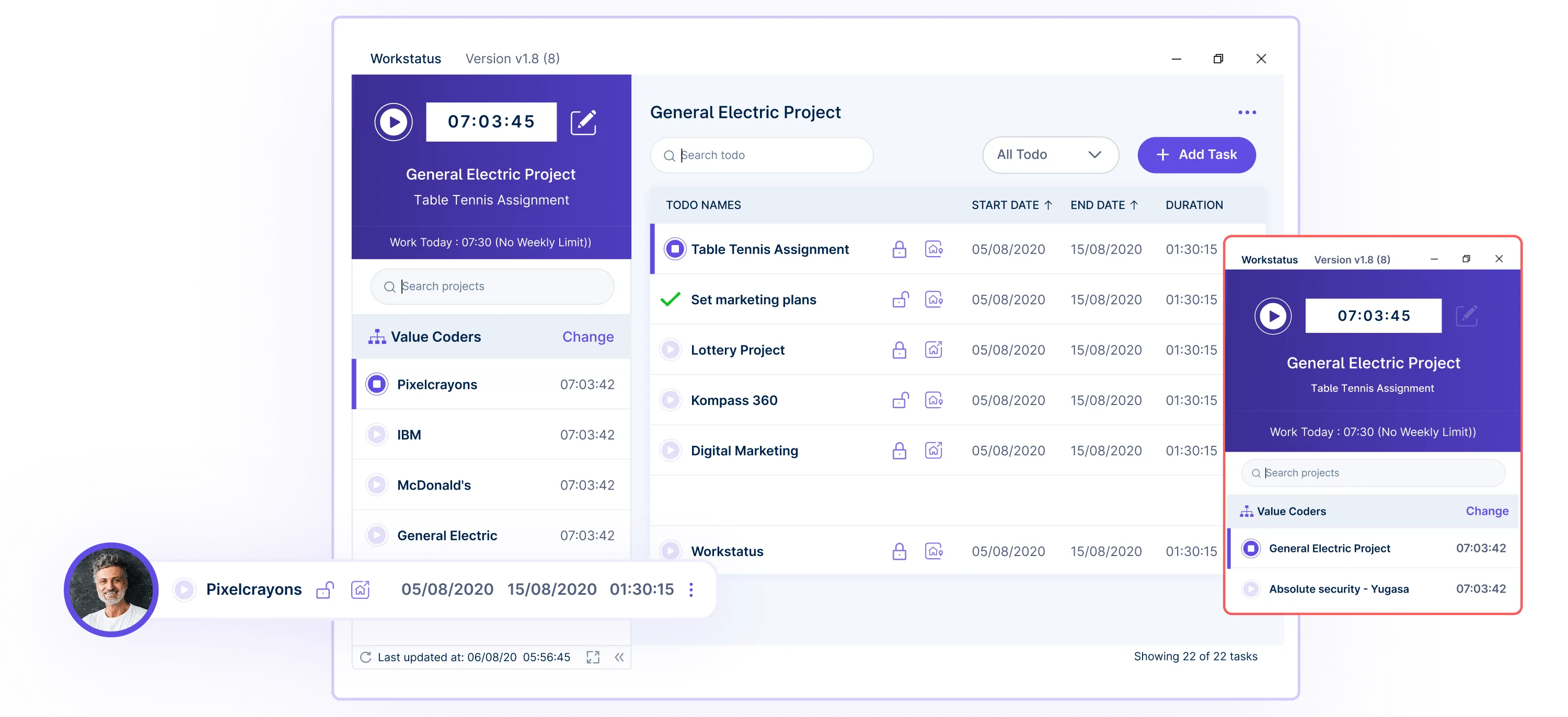
2. Streamlined Employee Scheduling
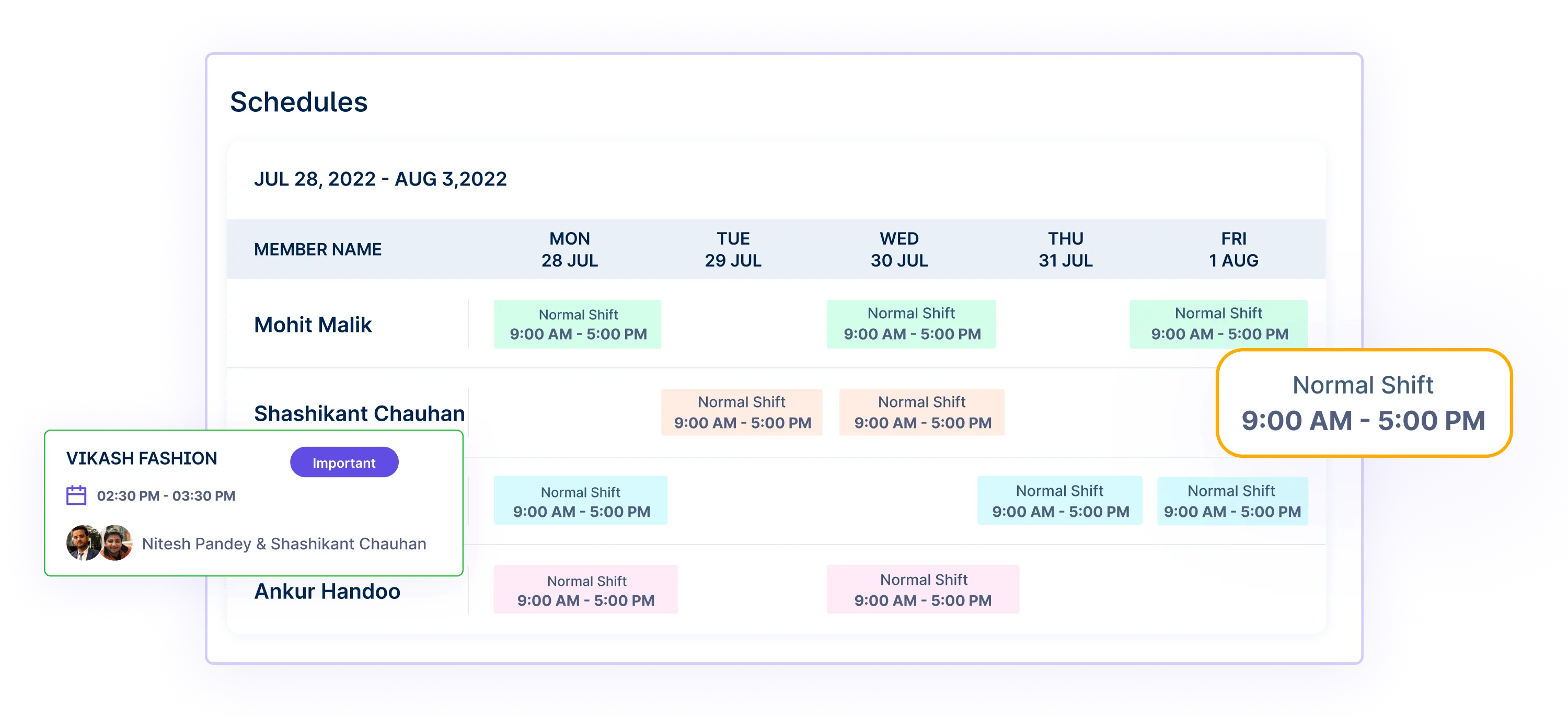
Scheduling employees can be challenging, especially when dealing with hybrid staff. This is where Workstatus for scheduling comes in handy. The ease of assigning on-site or remote work days, shift timings, and work flexibility will improve the efficient use of the available workforce.
3. Reliable Attendance Management
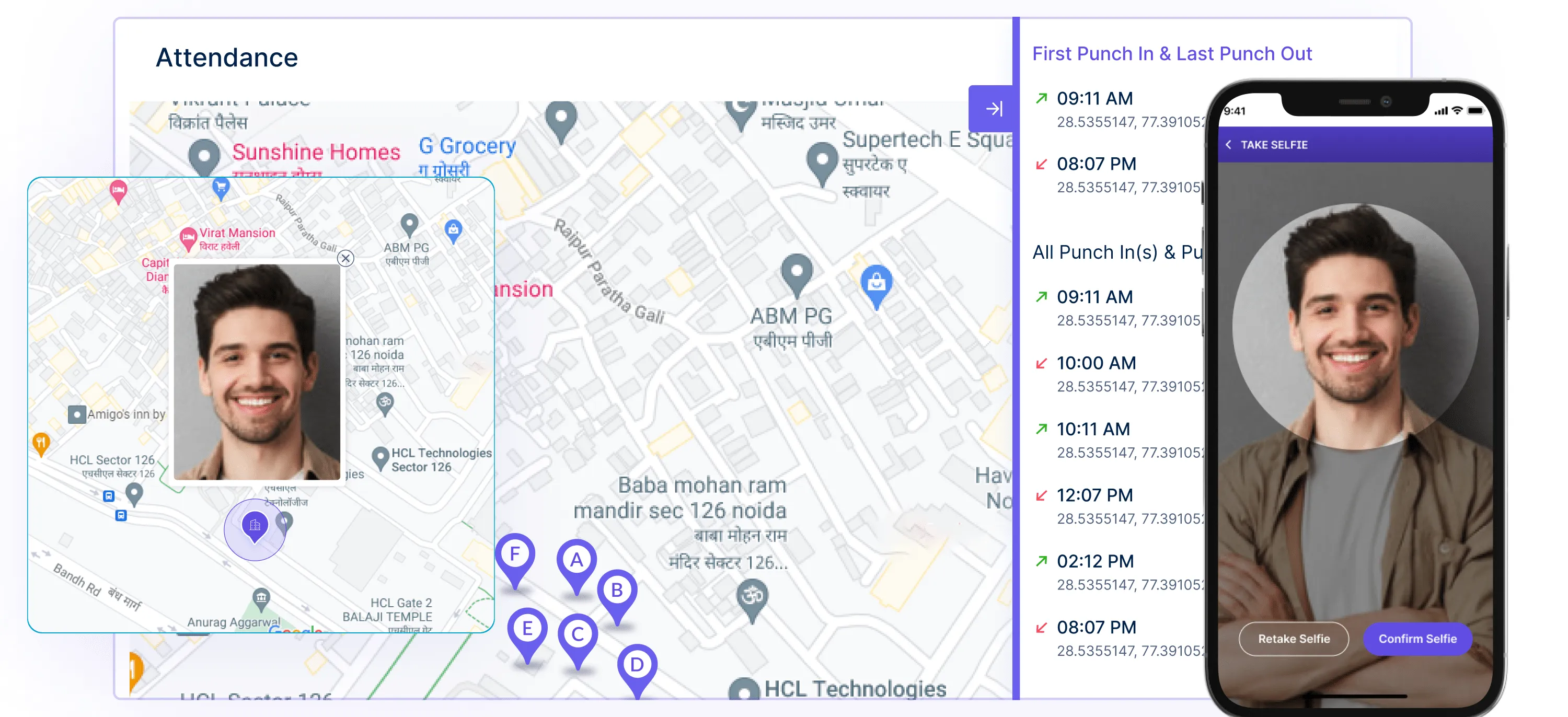
Monitoring attendance is essential for processing payroll and ensuring the company’s efficiency. You can use features in Workstatus such as IP address identification, time tracking, and geofencing to provide a practical solution for managing attendance. This helps ensure that employees are accountable for their work hours, whether online or offline.
4. Personalized Habit Tracker App
![]()
Workstatus understands the importance of the well-being and productivity of workers who use a partially remote work model. Their employee habit tracker app helps staff members monitor and adjust their habits related to physical activity, hydration, and breaks. It also promotes work-life balance to reduce burnout rates and increase employee morale and productivity.
5. Manage Employee Burnout
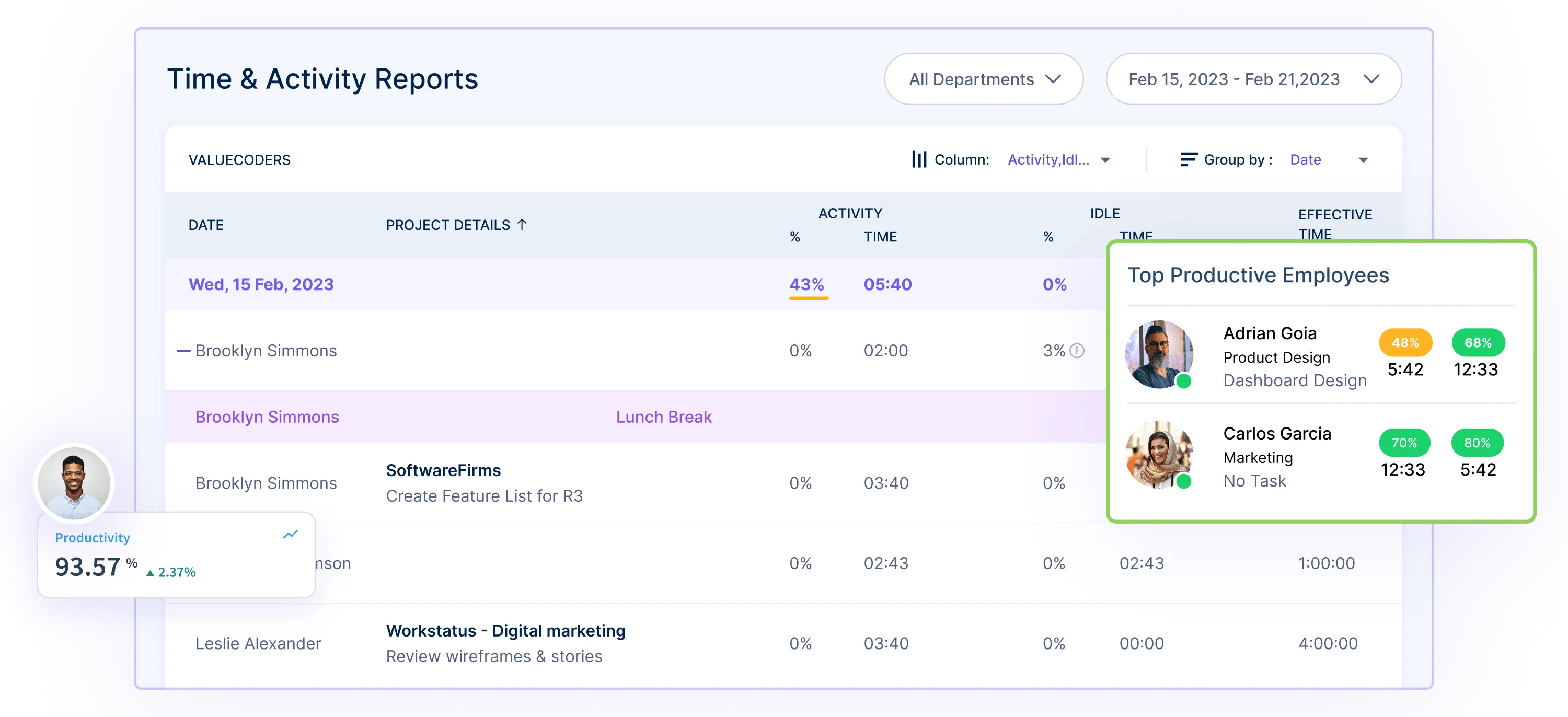
Hybrid working styles can sometimes affect work-life balance, putting employees at risk of burnout. To prevent this, Workstatus offers strategies for avoiding burnout. Managers can identify signs of burnout and prevent it by regularly monitoring workloads, schedules, key metrics, and employee feedback.
How To Develop And Implement A Hybrid Work Schedule?
Here is how you can develop and implement a Hybrid Work Schedule in a workplace:
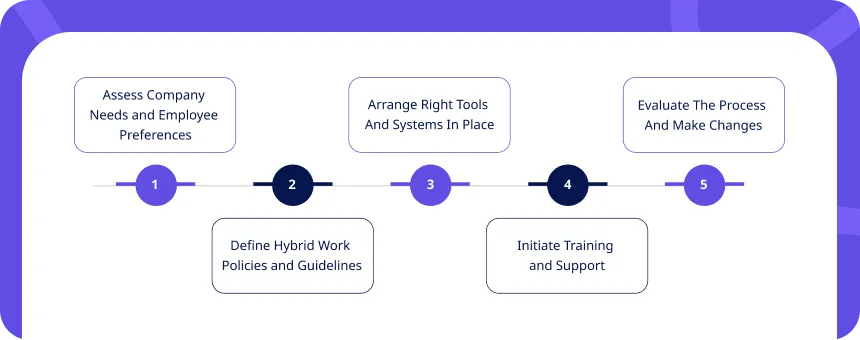
Step 1: Assess Company Needs and Employee Preferences
When implementing a hybrid work schedule, the first step is to evaluate the company’s needs and get employee input. Assess the nature of your company, the team members’ cooperation, and the type of work you do to determine whether implementing the hybrid model is feasible. Ask staff members about their preferences for remote versus on-site work, their issues, and what kind of working arrangements they would want through surveys or focus groups.
Step 2: Define Hybrid Work Policies and Guidelines
Policies and guidelines must clearly outline acceptable and inappropriate physical and remote work behavior in hybrid employment setups. These should cover communication, security, performance standards, and eligibility requirements for hybrid arrangements. It’s also important to explain possible hybrid arrangements, such as split-week, alternating-week, or core hours models, and provide guidance on their implementation and modification.
Step 3: Arrange Right Tools And Systems In Place
In a hybrid work environment, managing the scheduling of meeting rooms, coordinating correspondence, reserving desks, and organizing community-building events becomes increasingly complex. To guarantee a reliable and controllable hybrid experience, selecting a platform that precisely meets your needs is crucial.
Step 4: Initiate Training and Support
Providing comprehensive training sessions for managers and other staff members regarding the new hybrid work model is important. Discuss issues including communication, working remotely, time management, and efficient use of technology. Consider setting up helplines to offer support for any technical problems that may arise during the transition.
Step 5: Evaluate The Process And Make Changes
The hybrid work policy might need adjustments as circumstances change. Use tools to monitor productivity and seek feedback from managers and staff. Embracing changes like work will lead to greater success for businesses.
Closing Thoughts
Hybrid work schedules are crucial for organizations that wish to stand out from the competition and attract the best talent to their team. Combining the benefits of on-site and remote work with fewer drawbacks than other models, hybrid models can be considered the most appropriate and effective option.
These hybrid work schedules, ranging from split weeks to schedule rotation and project-based situations, help firms improve the necessary strategy.
However, businesses must understand that advanced techniques are essential for successfully utilizing these models to tackle modern challenges such as technology, communication, and the declining organizational culture.
Hence, only flexible companies will adopt a hybrid work schedule to survive an unpredictable environment. Despite obstacles, businesses will find that the benefits of a motivated workforce outweigh the costs of a hybrid work environment.











